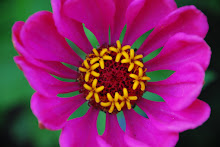The annual planting of potatoes in our garden is by far my husband's favorite gardening activity. Selecting the varieties, planting them, nurturing them, watching their growth, then finally counting the harvest! This year we selected 5 varieties to grow in 5 containers: german butterball, all blue, cherry red, rose finn apple fingerling and russian banana fingerling. In the past we have grown potatoes in the ground and decided containers were a better use of our small urban growing space. We use 4 potato tubs, purchased at Portland Nursery, and one large storage tub we had laying around.

Growing your own potatoes is a very thrifty thing to do. They are easy to grow, don't need a lot of care and aren't picky about the soil they are in. They are also super cheap to buy. My seed potatoes cost between .10 and .39 cents each for one seed potato. That one seed potato will then yield about 10 more potatoes. The Territorial Seed Catalog says standard potatoes will yield about 10 times the amount originally planted and fingerlings will yield from 15 to 20 times the amount originally planted. So I just spent $1.22 total for my seed potatoes which at harvest will yield about 60 delicious homegrown organic potatoes. Yes, that is correct. Quite a bargain, eh? Grow potatoes! They store well, they are nutritious & filling, and very versatile in lots of recipes.


Here are some tips for potato growing. Potatoes like loose, well-drained soil. But, really, why do I even say that because that is what MOST plants want. Here in Portland plant potatoes in the late winter and early spring, up until the average last frost date. Which for Portland is April 15th. Right now is a perfect time for planting potatoes. When planting potatoes in containers, they do well starting out in just a few inches of straight compost, just enough to cover them. At planting I water them in with liquid seaweed. As your potatoes begin to grow and sprout more leaves on taller stalks you can add another layer of compost covering a few inches of the stalk base. This layering of compost as the plant grows encourages more new root "arms" with more layers of potatoes growing underground.

To plant potatoes used certified seed potato from a reputable nursery or seed catalog. If your seed potato is small you can plant it whole. If it's large you can cut it into smaller pieces, but make sure each piece has three "eyes" sprouting. After cutting your seed potatoes dust them with powdered sulfur which will prevent fungal disease and let them air dry for a few days prior to planting. I eliminate this entire process by purchasing very small seed potatoes.
Potatoes want full sun and a weed-free growing area. Potatoes like a fertilizer high in Phosphorus (that's the "P" in your N-P-K ratio) and low in Nitrogen. I use Rock Phosphate which is a great natural source of Phosphorus. Naomi Montacre of Naomi's Organic Farm Supply in Portland describes Rock Phosphate as "soft colloidal phosphates mineralized from ancient sea fossils and shells, this is a good slow release source of phosphorous, calcium and trace minerals." You can also be thrifty and save money by purchasing your Rock Phosphate in bulk at your local nursery.

All right friends, the one other thing I know about potatoes is it's super fun to dig them up and harvest! Please let me know if you have any questions. Happy Spring! Jolie










No comments:
Post a Comment